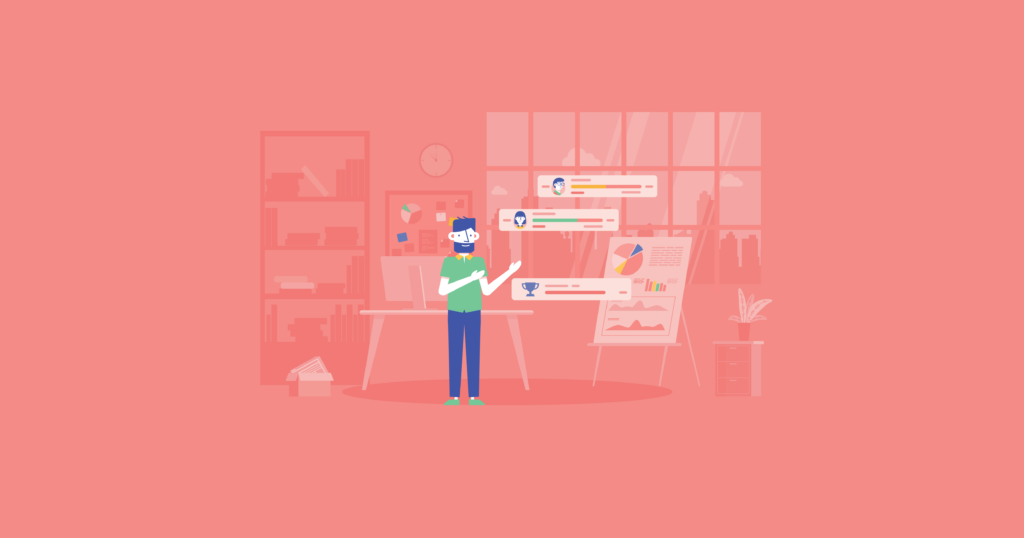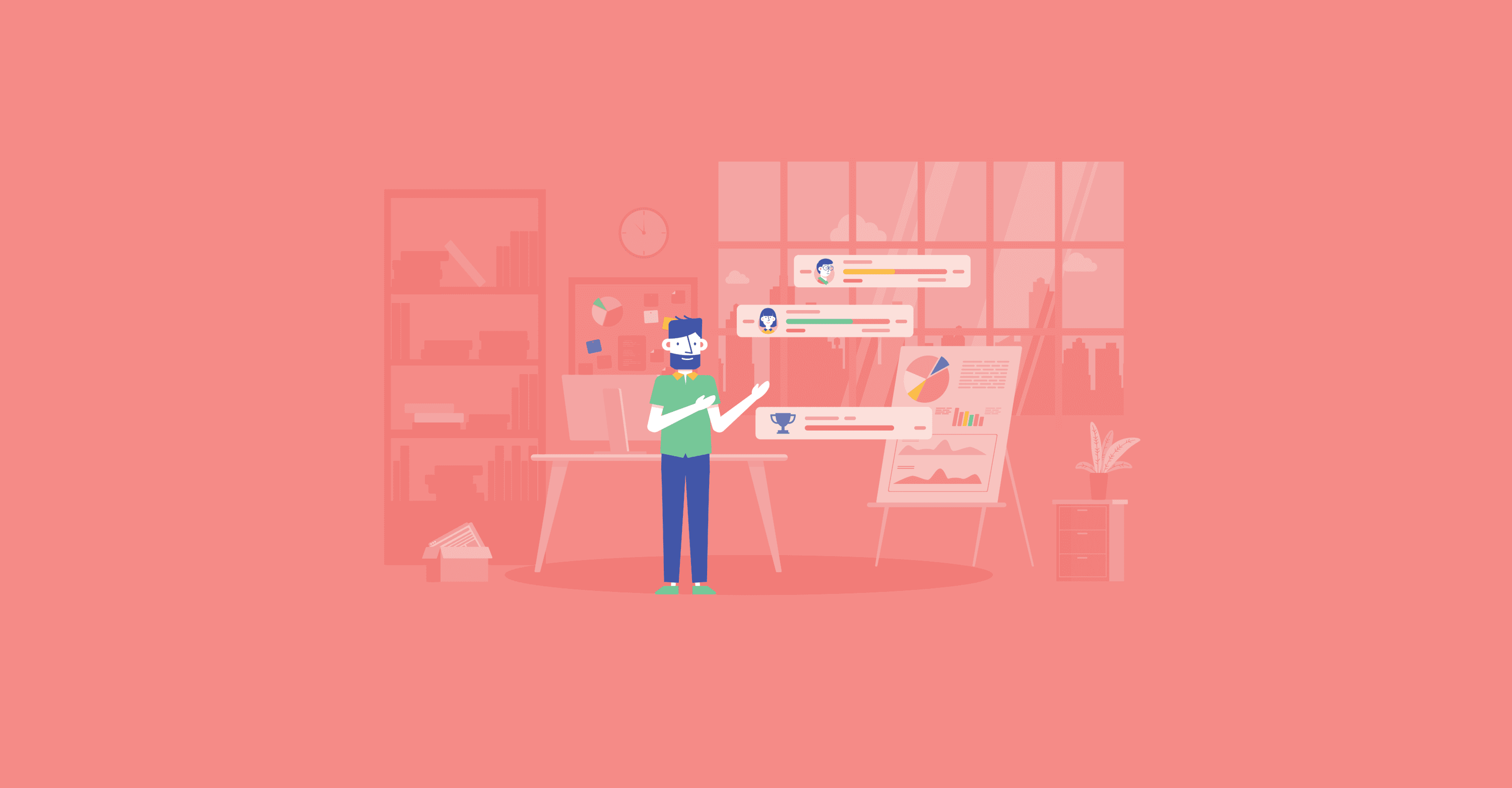While Emily Blunt may have been positively enchanting portraying everyone’s favourite nanny on the big screen in 2018, who can forget Julie Andrews’ classic words from the 1964 original: “In every job that must be done, there is an element of fun. You find the fun and – SNAP – the job’s a game!” In that very short sentence, Mary Poppins was able to convey a powerful message of work engagement that — as is typical of rebellious children — would go on to be ignored for decades. In fact, only today is the true hidden wisdom behind those words being finally rediscovered. This is thanks to gamification. So for today’s article, we’re taking a look at some noteworthy (and notorious) gamification examples.

What Is It?
Back in 2010, when gamification was hardly on anyone’s radar, the Swedish government put to the test a most fascinating theory: that with the right degree of positive motivation, drivers would be a lot more likely to adhere to established speed limits.
In order to do this, Stockholm worked with a man called Kevin Richardson, who had previously won Volkswagen’s Fun Theory contest. As a result of this remarkable collaboration, people driving at or below the legal speed limit would be entered into a lottery draw — for a chance to win proceeds of all traffic fines imposed on speeders. Unsurprisingly, the experiment was a huge success, with the average detected speed decreasing by 7 km/h.
But to better understand this concept, let’s go over a gamification definition: it is the process of integrating game mechanics into ordinarily non-game contexts. It is important to mention here, however, that this is not limited to the public sector. In fact, a recent survey found that gamification in the workplace was able to create an experience that improves productivity (87 percent of surveyed individuals), can raise engagement levels (84%) and considerably increase employee satisfaction (82%).
Nevertheless, when it comes to gamification in the workplace, things aren’t always as straightforward as you think. Unless you are willing to listen to and understand your employees, clearly identify your goals and objectives and create an experience with the right degree of difficulty, you could be setting your company up for a rocky ride ahead.
Bad Examples of Gamification
In fact, outside of the above recommendations, gamified workplaces can quickly become something significantly darker, as many companies see gamification practices as a form of control over their hapless employees. This usually occurs when they gamify the workplace with a hidden agenda, using games as a clever distraction for implementing a de facto electronic tracking system.
The most notorious of these bad gamification examples is that of Disney, who once decided to increase their productivity by displaying scoreboards all over laundry facilities. Each laundry machine would monitor the rate of individual employee output, and flash red and yellow lights whenever workers were slowing down. Unsurprisingly, this did not go according to plan, as the “electronic whip” — as it was affectionately known by Disney employees — may have resulted in one competing against coworkers, but it also led to an increase in injuries and a neglect of good hygiene practices.
Other examples of bad gamification
Another example of gamification gone wrong is that of Go365, a health app introduced in 2017 by the Public Employees Insurance Agency (PEIA). In addition to blood glucose levels, sleep cycles, diet and medical histories, the app tracked the user’s location, daily steps and physical activity, and was presented as a motivating tool, in the vein of other smartphone fitness apps. But while the agency claimed that participation was voluntary, failure to gather sufficient points (as well as to increase points year on year) meant an additional $500 in premiums. After years of funding cuts to the PEIA, users saw the application as a way to surreptitiously kick workers off their healthcare plans, so they organised a strike in protest and eventually succeeded in scrapping the app.
Other gamification projects fail by simply failing to relate to its users. A badge system may appear to be a fantastic idea on paper, but without a meaningful achievement attached to it, your employees or customers will probably never use it. The taxi service Lyft comes to mind here, as the Uber competitor created a system that enabled customers travelling on specific days to earn badges for just hailing a cab. As a customer, however, why would anyone spend money to travel on a random day of the week, with absolutely nowhere to go, for the sole purpose of earning a badge? As a result, Lyft’s badge system was an engagement disaster.
Good Examples of Gamification
By contrast, when gamification is appropriately employed by companies, it can be used to foster creativity and promote a healthier company culture. So with this in mind, in order to better implement gamification and game-based solutions, it is important to understand your audience and align your objectives with the user’s needs. Any misalignment of goals or priorities will lead to a bad gamification outcome, so make sure you determine early on what exactly your intentions are, what problems you are trying to resolve, what the process to accomplish this would be, and if gamification is the right tool for your business. On that note, the gamification examples listed below will illustrate the power of a well-conceived strategy:
Duolingo
Language learning app Duolingo has already turned gamification into an artform, as the efficacy of its game-based efforts is truly staggering to say the least. The app provides over 100 different language courses in 40 individual languages and makes use of a clever interface employing experience points, achievement streaks and in-app currencies to encourage users to keep returning to the app for more. This has done wonders for Duolingo’s overall engagement levels, as the application currently boasts over 40 million active monthly users.
Simple Energy
Colorado-based Simple Energy’s primary goal is to motivate individuals to save energy. In order to do this, the company makes good use of gamification concepts that aim to inspire their customers to take action. The more energy consumers save, the more points they can earn in the game. Better yet, they can later exchange points for prizes and other discounts on goods and services.
Nike Run Club
While plenty of fitness apps offer gamification elements including leaderboards, points, badges and rewards, Nike Run Club takes this one step further by bridging the gap between the physical world and ecommerce. In fact, beyond offering personalised training programmes that are adapted to the user’s fitness level, the app provides personalised coaching, guided runs, enables users to compete with friends and fellow runners and can even track the total steps of individual pairs of shoes you own. All in all, Nike Run Club is a masterclass in digitalisation of retail and marketing.
It’s super(califragilisticexpialidocious)
Even though the sound of it is indeed something quite atrocious, gamification offers companies a new and exciting way to engage and motivate their audience like it was never possible before. This reason alone should make it definitely worth considering!
In our own experience at SPG, we believe that when done correctly, gamification provides businesses with unparalleled opportunities. So whether creating a game-based solution to help employees get to know each other, aiming to improve productivity through fun activities and tangible rewards, or simply increasing engagement levels by challenging users to complete a mission, our software developers are always available to help you build your gamified masterpiece.
Just remember that whichever game you choose to create, no amount of inspiring messages will hide the aversion of being micromanaged. And above all, make sure your software solution is developed with your company’s main goals in mind. Here too, of course, Software Planet Group stand ready to help.



